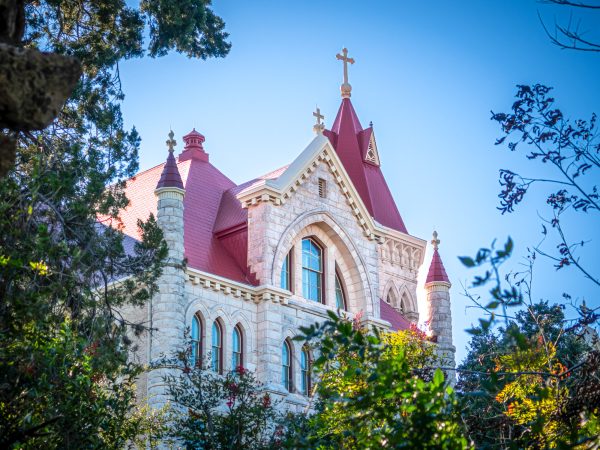Lecture series vocal about vocation
There is not a shortage of priests and nuns in the Catholic Church, a religious scholar said to an audience at St. Edward’s University.
Edward P. Hahnenberg spoke at the university on Oct. 20 as part of the Most Reverend Bishop John McCarthy Lecture Series on the Catholic Church in the 21st Century. Hahnenberg’s lecture, titled “The Real Vocation Crisis: Discipleship and Discernment among the people of God,” addressed the issues at hand and dismissed some misconceptions about the crisis.
“I think when Catholics hear the phrase ‘vocation crisis,’ we immediately think ‘clergy shortage,'” Hahnenberg said.
The declining number of priests and nuns was not the real problem, according to Hahnenberg. Rather, he said, the vocation crisis is actually due to a misunderstanding of the meaning of vocation.
“Thinking about the clergy shortage is too inward looking,” he said. “We can’t overshadow the primary purpose of the church, to further the mission of Christ. It’s not so much that the church has a mission, but that the mission has a church.”
Hahnenberg said that the broader notion of vocation developed out of Jesus’ call to his disciples, and God calling to people of Israel.
After Vatican II, a period in the 1960s when the Vatican council instituted several changes within the Church, this meaning became more of a “call to holiness,” meaning that to be called to a vocation was being a priest. This is where the meaning of vocation changed, according to Hahnenberg.
“Being brought up in a Catholic town, I heard the word ‘vocation’ a lot, and it always meant one thing: vocation was the call to be a priest, and nuns, too, for the girls,” Hahnenberg said.
This understanding of vocation was the hierarchy that Martin Luther, who began the Protestant Reformation, broke down.
“Luther saw priesthood as a broad category that invited all, not just the clergy,” Hahnenberg said. “He did the same thing with vocation.”
Luther encouraged people to remain in the call in which you were called in your life, according to Hahnenberg. Luther understood that entering solitary religious life was not the only form of vocation.
Hahnenberg encouraged the audience to look at vocation as Luther did, and to get rid of the idea that you had to run away and join a monastery to answer your call to God. In fact, the monk’s separation from society was actually easier, according to Hahnenberg.
“By turning over this centuries old conviction that the life of monastic withdrawal is the holiest way of life, we will launch a spiritual revolution,” Hahnenberg said. “The ordinary, the everyday, and not the elite. That’s where it’s at.”
Luther’s idea of vocation, known as the protestant work ethic, can be found in other forms of Christianity.
“You get this idea of vocation as faithfulness within one’s work, to faithfulness through one’s work, to faithfulness to one’s work,” he said.
The everyday struggles, relationships, and triumphs are where we find our calling, according to Hahnenberg.
“I really like the ending when he talked about how we’re made a certain way for what we’re called to do, and our job in life is to figure out what we were made to do,” freshman Ellie Meyer said.
Senior Katie Gleghorn said she still found common ground and new information from the lecture.
“Really, how he defined vocation for Catholics and for non-Catholics was interesting,” Gleghorn said. “I’m Presbyterian. So he talked about the differences and the changes, like the Catholic vocation and how that changed into the Protestant work ethic. “
Hahnenberg, an associate professor at Xavier University in Cincinnati, Ohio, was the 13th lecturer in the McCarthy series. He also authored three books, including Awakening Vocation: A Theology of Christian Call.





